Votre panier est actuellement vide !
hoe-farming.com
an antidote to globalisation
What is Hoe Farming?
Hoe farming is farming by hand, rather than with a machine. It involves using simple tools – hoe, sickle, axe, billhook, axe, etc. – to work a piece of land and to harvest your crops. In essence, it involves working with Nature, rather than in opposition to it.

What are the advantages?
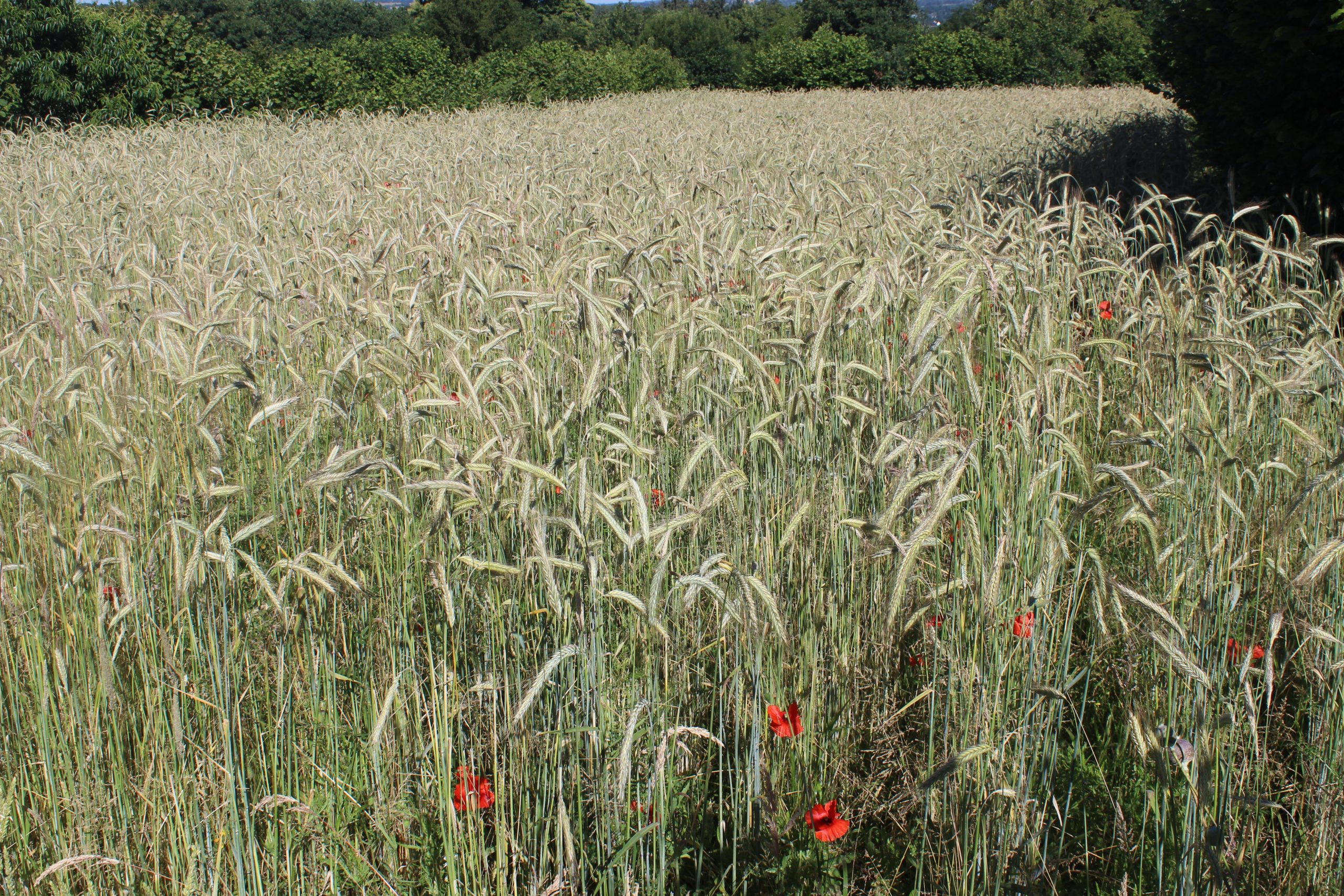
The primary advantage of hoe farming over other forms of farming is that it works: a small amount of effort yields all the crops that you could possibly need.
The produce is chemical free, and its production does not involve the purchase of expensive, complex equipment. Furthermore, by working a piece of land by hand, it is possible to increase soil fertility from one year to the next, rather than depleting it.
How Much Work Does it Take?
Hoe farming does not take an inordinate amount of time. If you know what you are doing, you can use a hoe to work a large vegetable garden in just a few hours per week. A small cereal field requires a few days work per year. The work is not too onerous, and is good exercise.
How Much Land Do You Need?
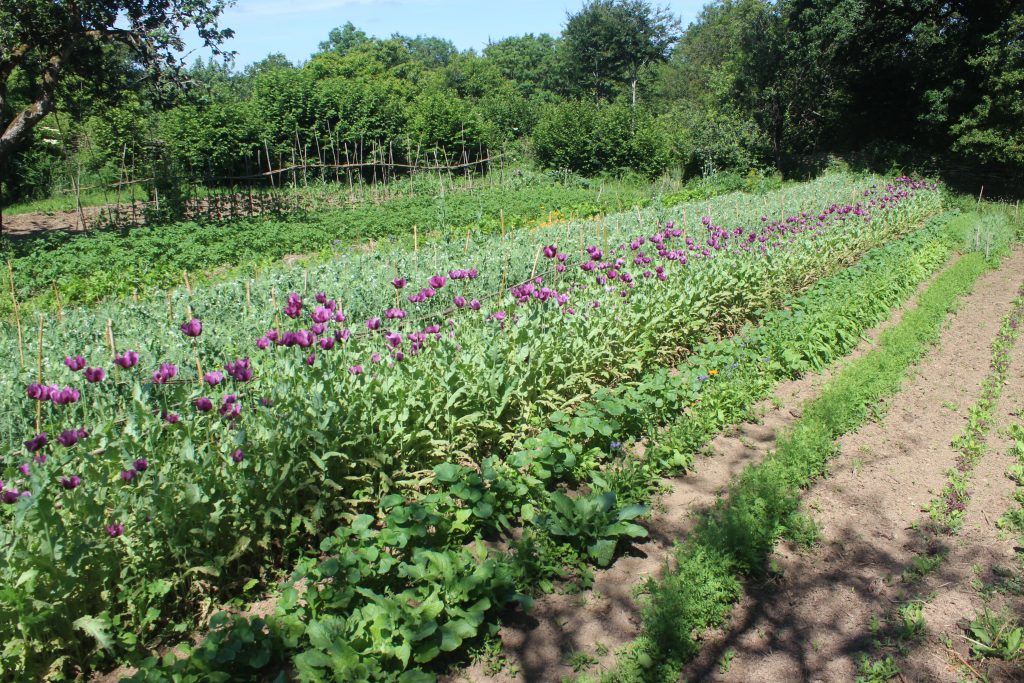
When working by hand, you soon realise that you do not want too much land – an acre of good land can be split into seven or eight small fields, and will provide plenty of work, and plenty of produce for a whole family.
What Can You Grow?
Cereals are the staple food of most people in the world, and hoe farming was the traditional technique used for cereal growing in many parts of the world until recently. Growing cereals by hand allows you to maximise the yield whilst still maintaining quality. Vegetables are well suited to hoe farming, and a crop of linen or some other fibre crop is a traditional ingredient of a small hoe farm. In addition, it is often forgotten that timber, and wood in all its forms, is the major crop produced by small-scale, hand-worked farms.
Could Hoe Farming Feed the World?
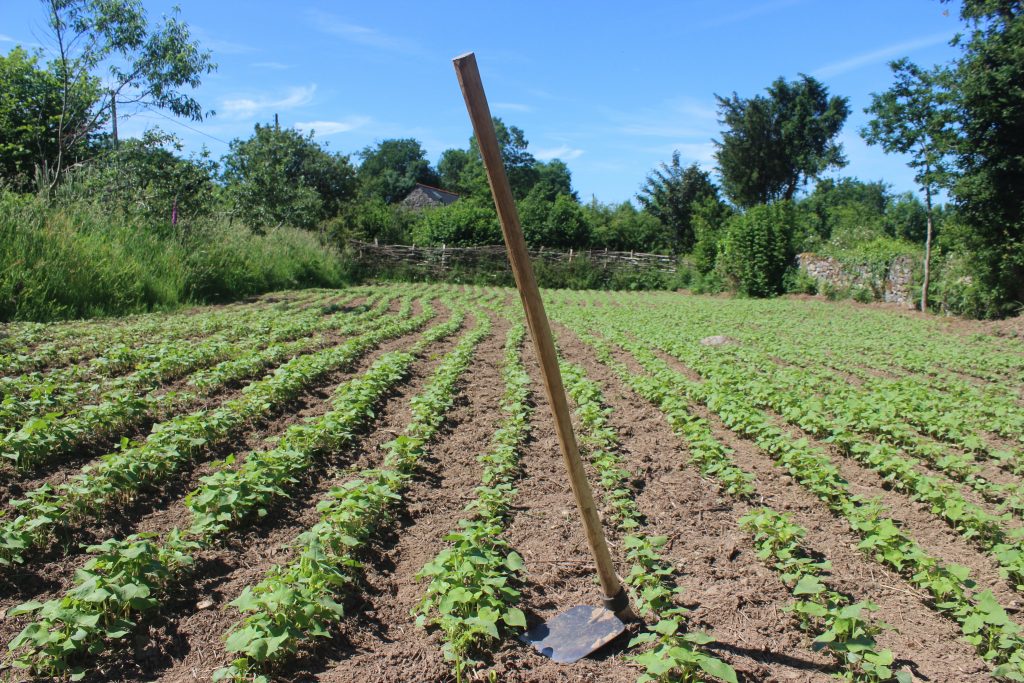
Hoe farming is much more efficient than machine-based farming, and there is every chance that it could not only feed the world, but also clothe it, supply it with its energy needs, and produce raw materials for building. Furthermore, hoe farming is wildlife friendly, and a hoe-farmed world would see a return to the wildlife populations of yesteryear.
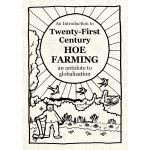
Pictures of a hoe farm in Brittany
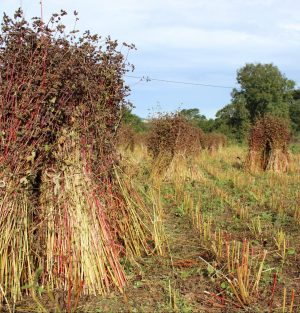
Articles and videos:
- Mulch
- Sowing Seed
- Crafts & Making a Straw Hat
- How Much Can You Safely Take Out From the Land?
- Harvesting Cereals
- Thatching with rye straw
- Does globalisation need an antidote?
Contact: info@hoe-farming.com